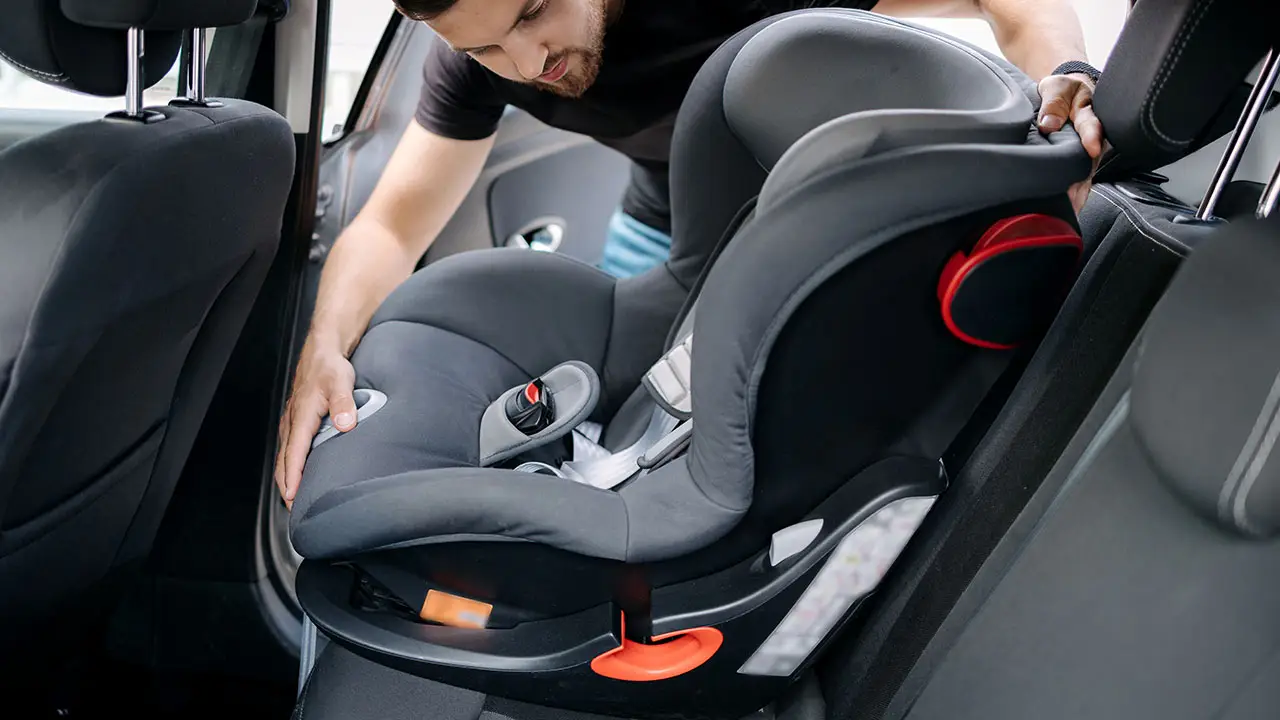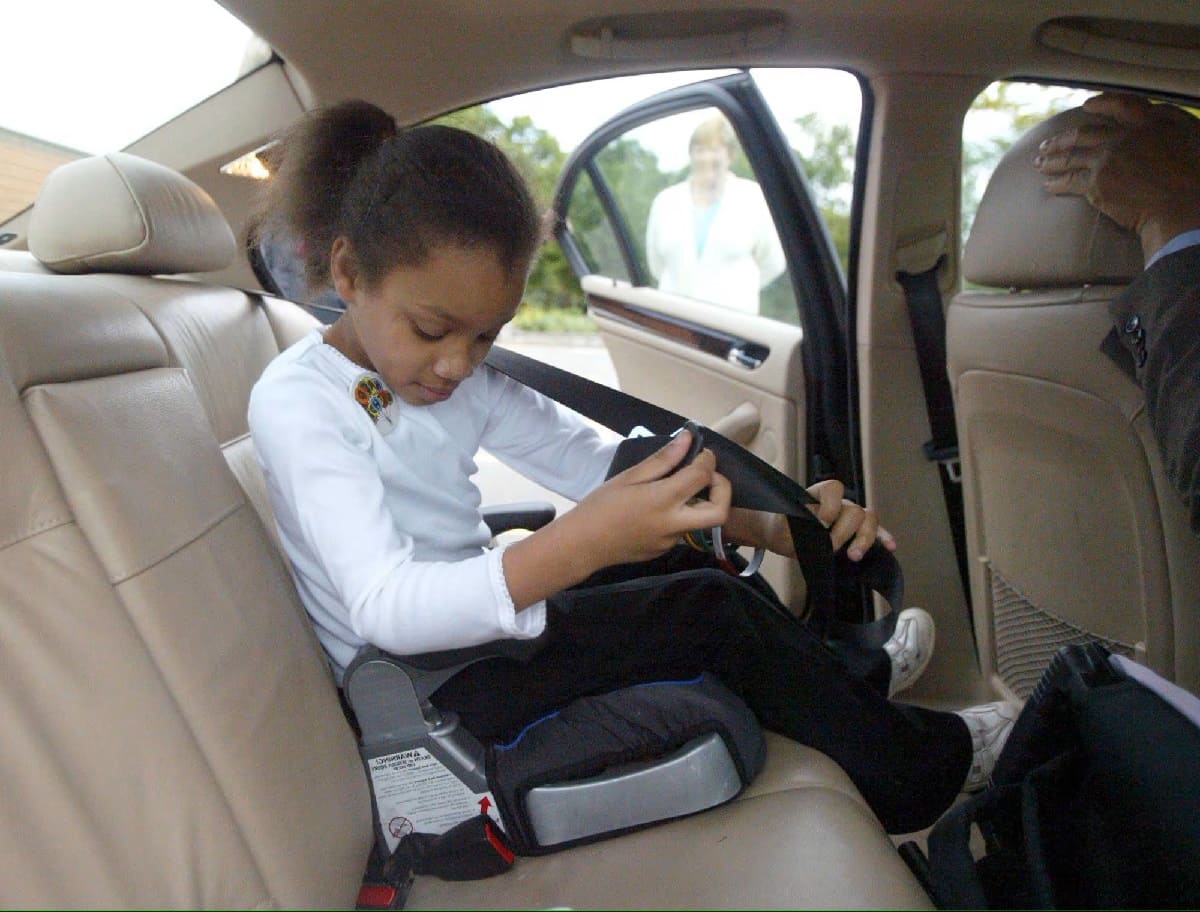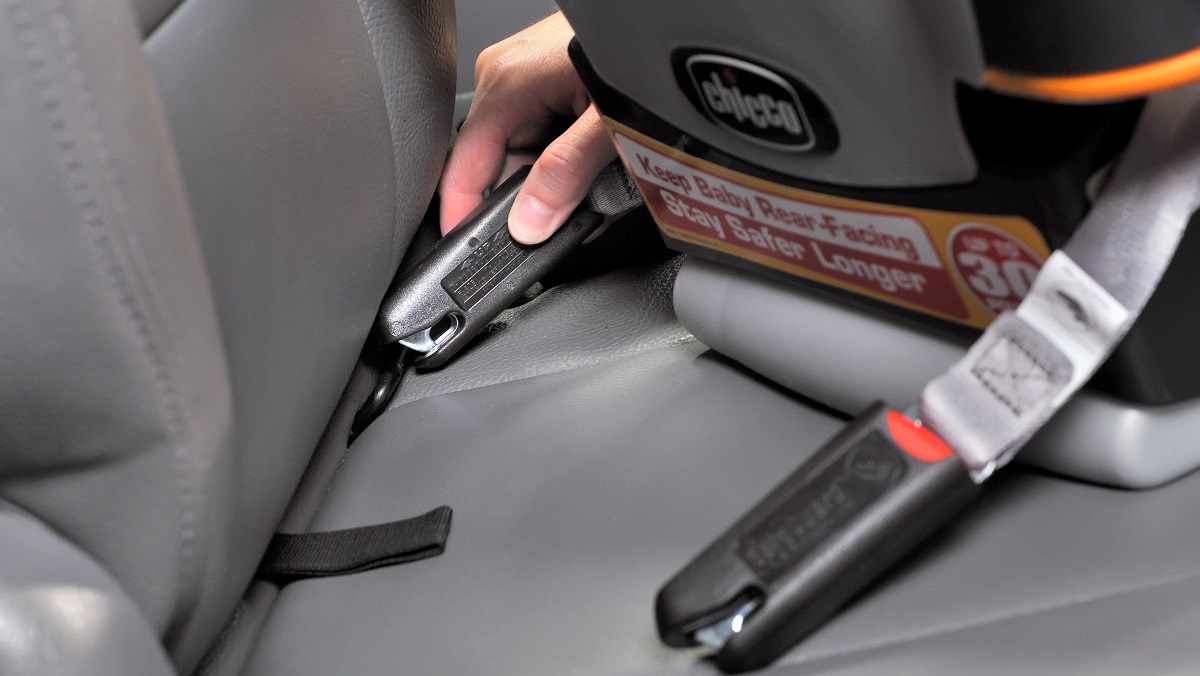Home>Maintenance & Safety>Child & Elderly Safety at Home>What Is The Age Requirement For A Booster Seat In Florida


Child & Elderly Safety at Home
What Is The Age Requirement For A Booster Seat In Florida
Modified: February 29, 2024
In Florida, the age requirement for a booster seat ensures child and elderly safety at home. Learn about the regulations and guidelines to keep your loved ones safe.
(Many of the links in this article redirect to a specific reviewed product. Your purchase of these products through affiliate links helps to generate commission for Storables.com, at no extra cost. Learn more)
Introduction
Ensuring the safety of children and elderly individuals within the home environment is a top priority for families. One crucial aspect of this safety protocol involves adhering to booster seat regulations, particularly in the state of Florida. Understanding the age requirements for booster seats is essential for safeguarding the well-being of young passengers during car journeys. In Florida, specific laws and guidelines are in place to ensure that children are adequately protected while traveling in motor vehicles. By comprehensively exploring the age requirements for booster seats in Florida, individuals can gain valuable insights into the measures necessary to promote child safety on the road.
Key Takeaways:
- Children aged four and five in Florida must use a booster seat for car safety, as they are not yet ready for adult seat belts. This helps keep them secure and protected during car journeys.
- Exceptions to the booster seat age requirement exist for children with unique needs or physical characteristics. Caregivers and drivers play a crucial role in ensuring the safety of all young passengers in motor vehicles.
Florida Booster Seat Laws
In Florida, the safety of children in motor vehicles is a paramount concern, and as such, the state has implemented specific laws and regulations regarding the use of booster seats. These laws are designed to ensure the protection of young passengers during car journeys, thereby reducing the risk of injury in the event of a collision or sudden braking.
Florida law mandates the use of a child restraint system for children under the age of five. This requirement applies to all motor vehicles, including cars, trucks, and vans. The child restraint system must be a separate carrier, an integrated child seat, or a child booster seat that meets federal safety standards. These standards are put in place to guarantee the effectiveness of the booster seat in providing adequate protection for young passengers.
Furthermore, Florida law stipulates that children aged four and five must be secured in a separate carrier, an integrated child seat, or a child booster seat. This requirement is based on the understanding that children within this age group are not yet ready to use adult seat belts as the primary form of restraint. By utilizing a booster seat, children can be positioned correctly to ensure that the vehicle's seat belt fits them securely, thereby minimizing the risk of injury in the event of a collision.
It's important to note that these laws are in place to safeguard the well-being of young passengers and to promote a culture of safety and responsibility among drivers and caregivers. By adhering to Florida's booster seat laws, individuals can contribute to the overall goal of reducing the number of child injuries and fatalities resulting from motor vehicle accidents.
In summary, Florida's booster seat laws are a crucial component of the state's commitment to child safety in motor vehicles. By understanding and complying with these laws, caregivers and drivers can play a significant role in protecting the youngest members of our communities while on the road.
Age Requirement for a Booster Seat
In Florida, the age requirement for a booster seat is a pivotal aspect of ensuring the safety of young passengers during car journeys. According to Florida law, children aged four and five are mandated to be secured in a separate carrier, an integrated child seat, or a child booster seat. This requirement is based on the understanding that children within this age group are not yet ready to use adult seat belts as the primary form of restraint.
The rationale behind this age-specific requirement is rooted in the physical development of children. At the age of four and five, most children have not yet reached the height and weight necessary for adult seat belts to fit them securely. As a result, utilizing a booster seat becomes essential to ensure that the vehicle's seat belt is positioned correctly across the child's body. This proper positioning minimizes the risk of injury in the event of a collision or sudden braking, thereby enhancing the overall safety of the child.
By adhering to the age requirement for a booster seat, caregivers and drivers can actively contribute to the protection and well-being of young passengers. It is crucial to recognize that the use of a booster seat for children aged four and five is not only a legal obligation but also a fundamental measure to mitigate the potential risks associated with inadequate vehicle restraint systems.
Moreover, understanding the age requirement for a booster seat empowers caregivers and drivers to make informed decisions regarding the safety of children in motor vehicles. By recognizing the specific age at which a child should transition from a traditional car seat to a booster seat, individuals can proactively prioritize the safety and security of young passengers during car journeys.
In essence, the age requirement for a booster seat in Florida serves as a fundamental guideline for promoting child safety in motor vehicles. By acknowledging and complying with this requirement, caregivers and drivers play a pivotal role in upholding the state's commitment to safeguarding the youngest members of our communities while on the road.
In Florida, the age requirement for a booster seat is 4 to 5 years old, or until the child reaches the height of 4 feet 9 inches. It’s important to follow these guidelines to ensure the safety of your child while traveling in a vehicle.
Exceptions to the Age Requirement
While Florida's booster seat laws establish clear guidelines for the age requirement, certain exceptions exist to accommodate specific circumstances. These exceptions are designed to address unique situations where the standard age requirement may not be applicable or practical. Understanding these exceptions is crucial for caregivers and drivers to navigate potential scenarios that deviate from the typical age-based regulations.
One notable exception to the age requirement for a booster seat pertains to the physical characteristics of the child. In some cases, a child's height and weight may not align with the standard age guidelines for transitioning to a booster seat. It is essential to recognize that the primary objective of utilizing a booster seat is to ensure that the vehicle's seat belt fits the child securely, thereby minimizing the risk of injury in the event of a collision. Therefore, if a child's physical attributes necessitate the continued use of a traditional car seat beyond the typical age range, this exception allows caregivers and drivers to prioritize the child's safety based on individual developmental factors.
Additionally, certain medical conditions or special needs may warrant exceptions to the age requirement for a booster seat. Children with specific medical considerations or physical limitations may require customized accommodations to ensure their safety during car journeys. In such instances, caregivers and drivers must assess the unique needs of the child and make informed decisions regarding the most appropriate form of restraint. By acknowledging these exceptions, individuals can demonstrate a proactive commitment to addressing the diverse safety requirements of young passengers, thereby promoting inclusivity and comprehensive protection for all children in motor vehicles.
Furthermore, Florida's booster seat laws recognize the importance of flexibility in exceptional circumstances, emphasizing the overarching goal of prioritizing child safety. By acknowledging and accommodating these exceptions, caregivers and drivers can navigate nuanced situations with a heightened awareness of the diverse factors that influence the appropriate use of booster seats. This nuanced approach underscores the state's commitment to promoting a comprehensive culture of safety and responsibility, ensuring that the well-being of young passengers remains a top priority in all car journeys.
In essence, understanding the exceptions to the age requirement for a booster seat empowers caregivers and drivers to navigate unique situations with a keen focus on individualized safety considerations. By recognizing and addressing these exceptions, individuals can uphold the fundamental principles of child safety while fostering a culture of inclusivity and proactive protection for all young passengers in motor vehicles.
Choosing the Right Booster Seat
Selecting the appropriate booster seat for a child is a critical decision that directly impacts their safety and well-being during car journeys. When navigating the process of choosing the right booster seat, caregivers and drivers must consider several key factors to ensure optimal protection for young passengers.
First and foremost, the weight and height specifications of the booster seat are fundamental considerations. Different booster seats are designed to accommodate varying weight and height ranges, and it is essential to select a seat that aligns with the child's specific measurements. By adhering to the manufacturer's guidelines regarding weight and height requirements, caregivers can ensure that the booster seat provides an appropriate fit for the child, thereby optimizing its effectiveness as a safety restraint system.
Moreover, the design and structural features of the booster seat play a crucial role in enhancing safety. Caregivers should prioritize booster seats equipped with robust harness systems and impact-absorbing materials to provide comprehensive protection in the event of a collision. Additionally, the ease of installation and adjustment mechanisms are essential factors to consider, as they contribute to the overall convenience and reliability of the booster seat.
Furthermore, caregivers and drivers should prioritize booster seats that have been rigorously tested and certified to meet federal safety standards. By selecting a booster seat that complies with established safety regulations, individuals can have confidence in its ability to safeguard the child during car journeys. Additionally, considering the longevity and durability of the booster seat is important, especially for long-term use and potential future transitions as the child grows.
Another crucial aspect to consider is the compatibility of the booster seat with the vehicle's seating configuration. Caregivers should assess whether the selected booster seat can be securely installed in the specific vehicle(s) in which it will be used. Compatibility with the vehicle's seat belts and the presence of LATCH (Lower Anchors and Tethers for Children) systems are essential factors to evaluate during the selection process.
In summary, choosing the right booster seat involves a comprehensive assessment of the seat's specifications, safety features, compliance with regulations, and compatibility with the vehicle. By prioritizing these considerations, caregivers and drivers can make informed decisions that prioritize the safety and well-being of young passengers during car journeys. Ultimately, the careful selection of a suitable booster seat reflects a proactive commitment to promoting child safety and ensuring peace of mind for all individuals involved in the transportation of young passengers.
Read more: What Are The Requirements For A Booster Seat
Conclusion
In conclusion, understanding the age requirement for a booster seat in Florida is a fundamental aspect of promoting child safety and well-being during car journeys. By adhering to Florida's booster seat laws and recognizing the specific age at which children should transition to a booster seat, caregivers and drivers play a pivotal role in upholding the state's commitment to safeguarding young passengers on the road.
The age requirement for a booster seat, which mandates the use of a booster seat for children aged four and five, reflects a proactive approach to mitigating the potential risks associated with inadequate vehicle restraint systems. By acknowledging and complying with this requirement, individuals contribute to the overall goal of reducing the number of child injuries and fatalities resulting from motor vehicle accidents.
Furthermore, recognizing the exceptions to the age requirement underscores the importance of addressing unique circumstances where standard regulations may not be applicable. This nuanced approach emphasizes the state's commitment to promoting a comprehensive culture of safety and responsibility, ensuring that the well-being of young passengers remains a top priority in all car journeys.
Choosing the right booster seat is a critical decision that directly impacts the safety and well-being of young passengers. By prioritizing factors such as weight and height specifications, design and structural features, compliance with safety standards, and compatibility with the vehicle, caregivers and drivers can make informed decisions that prioritize the safety of children during car journeys.
In essence, the age requirement for a booster seat serves as a cornerstone of Florida's dedication to child safety in motor vehicles. By understanding and adhering to this requirement, individuals demonstrate a proactive commitment to protecting the youngest members of our communities while fostering a culture of inclusivity and comprehensive protection for all young passengers in motor vehicles.
Frequently Asked Questions about What Is The Age Requirement For A Booster Seat In Florida
Was this page helpful?
At Storables.com, we guarantee accurate and reliable information. Our content, validated by Expert Board Contributors, is crafted following stringent Editorial Policies. We're committed to providing you with well-researched, expert-backed insights for all your informational needs.















0 thoughts on “What Is The Age Requirement For A Booster Seat In Florida”